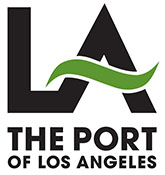
Wilmington Waterfront &
Wilmington Marinas
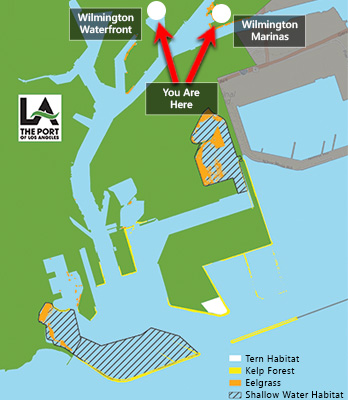
You Are Here
The waterfront near Banning’s Landing Community Center and along the Wilmington Waterfront Promenade offers visitors a “window to the waterfront” for the community of Wilmington. Nearby marinas provide opportunities to access the harbor and adjacent coastal habitats via boat.
On this Page:

Habitats Located at
Wilmington Waterfront and Marinas
Located in the inner harbor, habitats near the WIlmington Waterfont and nearby marinas include muddy seafloor, open water, riprap shoreline, and pilings. Hover over images below to learn about the different Wilmington Waterfront habitats.
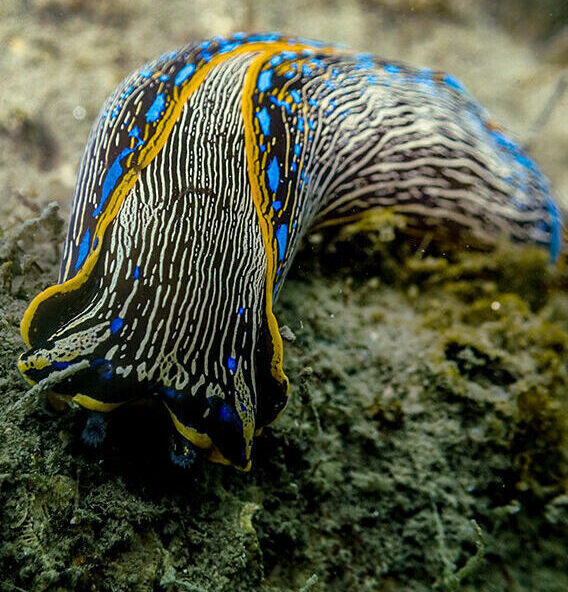
Seafloor
The seafloor in the inner harbor is comprised of mostly muddy sediments with some small patches of eelgrass on shallow slopes near the shoreline. Common animals here include gobies, shrimp, lobsters, and animals that burrow into the sediments such as worms and small clams.
Learn more!
Pelagic
The pelagic zone in the inner harbor is the open-water areas in the basins and channels away from the shoreline. Common animals here include topsmelt, anchovies, waterfowl, and the occasional dolphin and sea lion.
Learn more!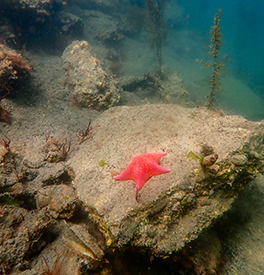
Riprap
Riprap in the inner harbor is widespread on rocky embankments and under piers to provide stabilization to the shoreline. Soft-bodied and coralline algae are commonly found on riprap, as well as sessile invertebrates like tube worms, sea squirts, and barnacles.
Learn more!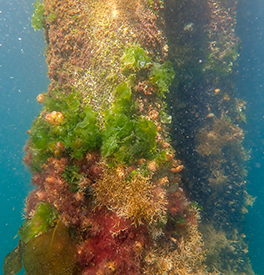
Pilings
Piling habitat in the inner harbor is widespread because marinas, marine terminals, and other artificial structures are plentiful. Communities on pilings vary with tidal zone, with barnacles common in the upper intertidal while algae and animals such as macroalgae, mussels, scallops, and sponges are more common in the lower intertidal and subtidal.
Learn more!What Lives Here?
Animals living in the inner harbor most commonly survive by attaching to pilings and riprap to filter plankton and particles out of the water, or by finding food on the muddy seafloor. Check out the photos below to see examples of species that have been found near-by Wilmington Waterfront!

Habitat: Seafloor. Bat stars (Patiria miniata) come in a variety of colors including purple, brown, yellow, orange, red and white which can be solid or mottled. As omnivores and scavengers, bat stars play an important role in the food web by eating dead plants, algae and animals from the seafloor.

Habitat: Pilings and Seafloor. The large amount of pilings in the inner harbor create favorable habitat for predators such as barred sand bass. As juveniles, these fish eat crabs and small shrimp while adults hunt other fishes such as midshipmen, which are also common in the area.

Habitat: Riprap, Pilings, Seafloor. Gobies and blennies are two groups of small fish that can create burrows in soft sediments and use cracks and crevices on riprap and pilings for shelter. These fish are small, well camouflaged and generally hard to capture with nets as adults. However, scientists know that inner harbor areas are valuable habitat for gobies and blennies because their planktonic larvae can be detected during plankton sampling. In 2018, gobies and blennies were among the most common and abundant larval fishes detected throughout the harbor.

Habitat: Riprap and Pilings. There are two species of oysters common in the harbor, the native Olympia oyster (Ostrea lurida) and the non-native Pacific oyster (Crassotrea gigas; pictured). Olympia oysters grow to a size of only 2-3 inches and were about 20 times more abundant in the harbor than the non-native species, which is conspicuous when growing on pilings as it can reach sizes of 10 inches. Oysters feed by filtering plankton and organic material out of the water.

Habitat: Riprap and Pilings. Rock scallops (Crassadoma gigantea) can be found from the intertidal zone to depths of more than 200 feet and are distinguishable by their orange or blue-green mantle between the shell opening with a visible row of blue eyes across each mantle . In the harbor, these animals are commonly observed attached to riprap and pilings in the subtidal zone, at times reaching sizes of up to 9-10 inches across. Rock scallops feed by filtering plankton and organic material out of the water.

Habitat: Riprap and Pilings. The Mediterranean mussel, Mytilus galloprovincialis, is a non-native species that has been introduced into coastal habitats worldwide both unintentionally through shipping and purposefully through aquaculture. Common and often abundant in intertidal habitats throughout the harbor, mussels feed by filtering plankton and organic material out of the water.

Habitat: Seafloor. Tube anemones live in soft sediments and form a leathery tube that can extend several feet into the seafloor. They are eaten by predatory snails called nudibranchs, in addition to fish species such as sand bass that will nip off the delicate tentacles. When attacked, the anemone can retreat into it’s tube for protection and also has the ability to regenerate lost tentacles.

Habitat: Riprap, Pilings. These colorful tubeworms, sometimes broadly called feather-duster or Christmas tree worms, can occur on hard substrate like riprap or pilings from the intertidal zone down to depths over 1,000 ft. The colorful plume is both the gills and feeding structure of the worm, and can be quickly retracted into the tube to protect from predation. The worms feed on suspended particles such as plankton and organic matter.

Habitat: Pelagic and Artificial Structures. Gulls are the most common type of bird observed throughout the harbor, representing 38% of the nearly 49,000 birds observed and identified during the 2018 Biosurveys. The western gull is a year-round resident and is the most abundant gull species. In fall and winter, migratory gull species such as Heermann’s gull, ring-billed gull, and California gull all use the harbor to rest and forage for food.

Habitat: Riprap, Pilings, Seafloor. Tunicates, or ‘sea squirts’, are commonly found in the harbor on the seafloor and riprap, and can be highly abundant on pilings. More than half of the tunicate species that are present in the harbors are non-native, with Ciona (pictured) one of the most abundant. Tunicates can be solitary or colonial, and use their two siphons to feed by filtering plankton and organic material out of the water.
Inner Harbor Riprap and Piling Habitat
Check out inner harbor riprap and piling habitat and the animals that call this area of the harbor home.
